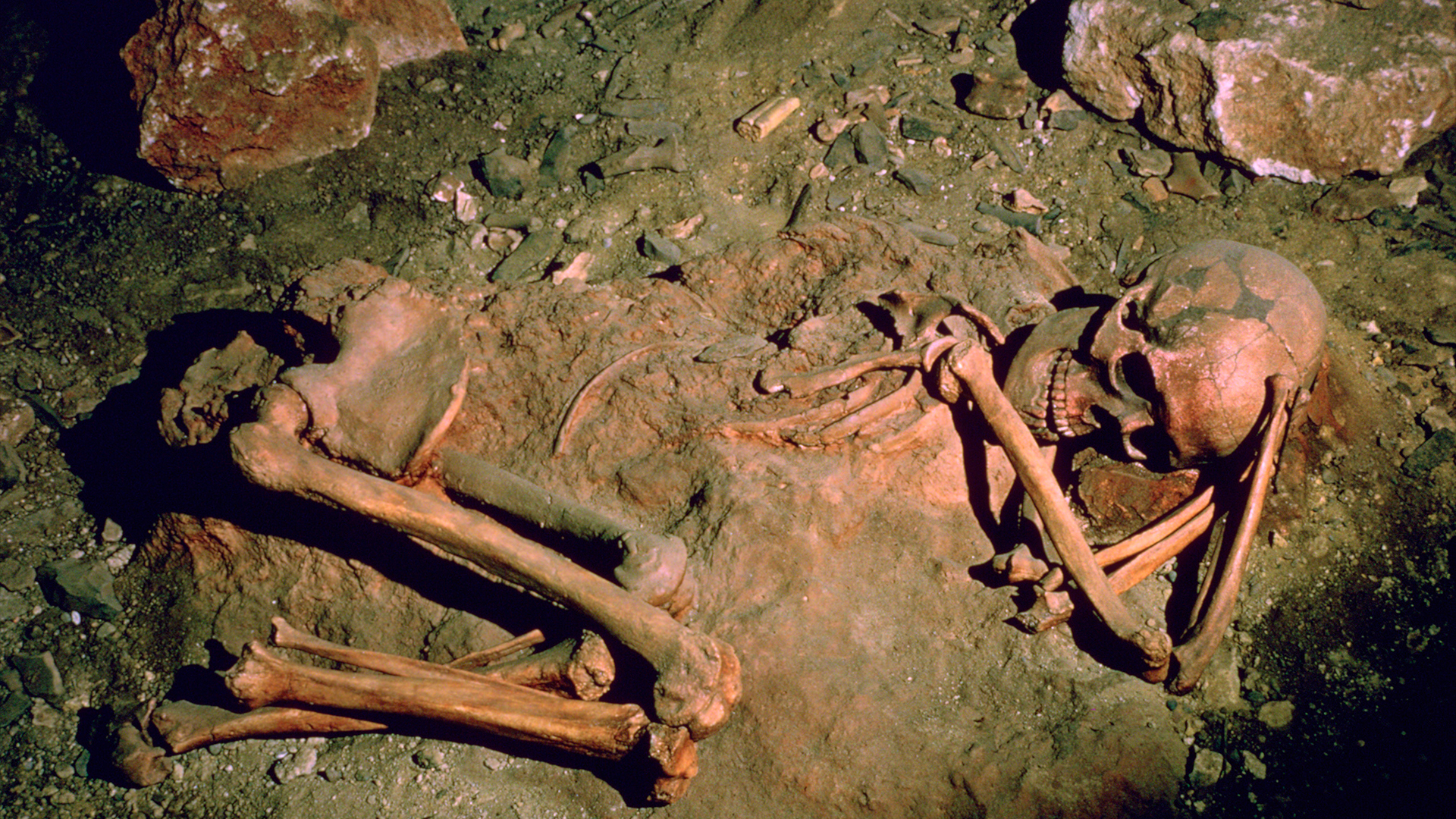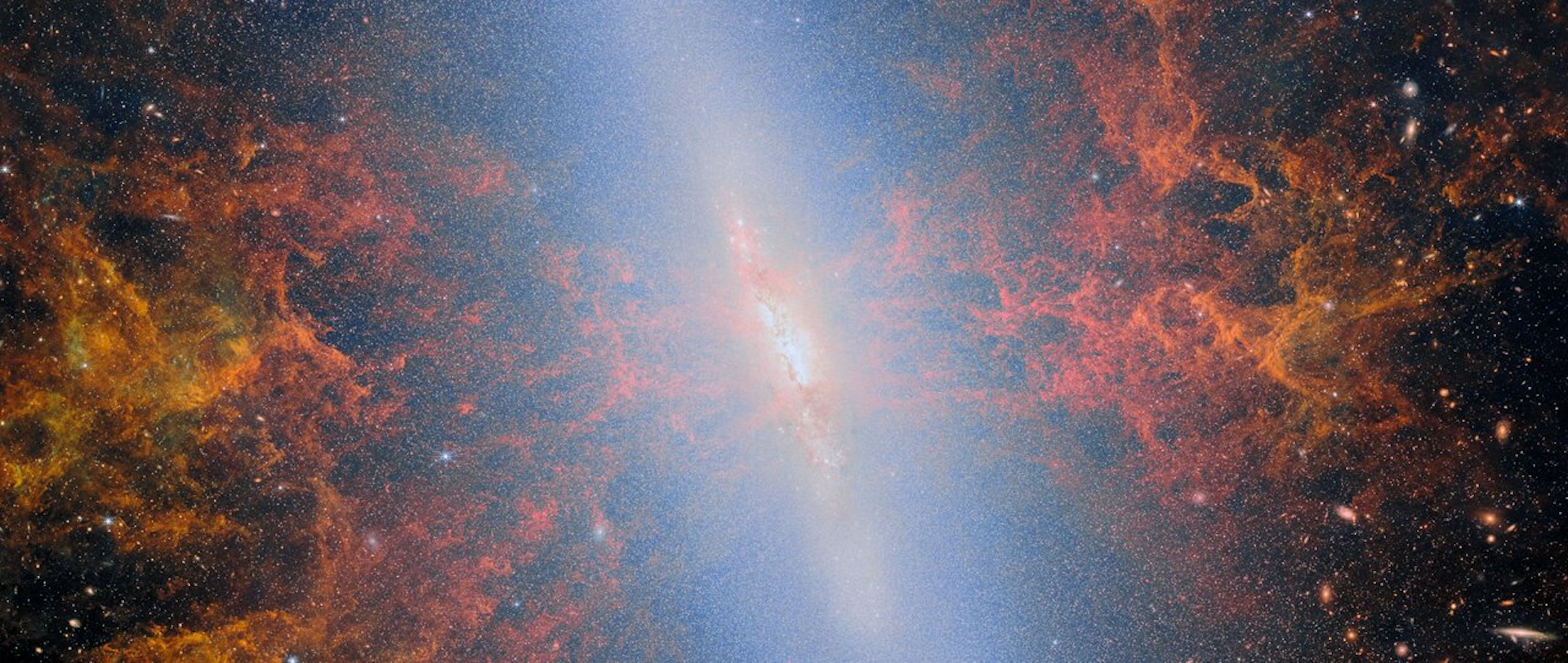When did humans start burying their dead?
Ancient caves mark the beginning of recorded burial rituals, but there's still so much we don't know about the history of human graves.

Many cultures around the world choose to honor deceased loved ones through burial. The ceremonies that accompany this ritual are steeped in history and tradition and can vary from culture to culture. But when was the first human burial?
There's no definitive answer because not all burial sites are preserved, let alone discovered and studied. But the earliest evidence so far points to the Middle Paleolithic (around 300,000 to 30,000 years ago).
"By at least 120,000 years ago we have what we believe are deliberately buried human bodies," Mary Stiner, a professor of anthropology at the University of Arizona, told Live Science.
Stiner doesn't rule out the potential for older burials to exist but said the most convincing early examples for modern humans (Homo sapiens) burying their dead come from the Middle Paleolithic. Some controversial research has suggested that extinct human relatives buried their dead around 300,000 years ago in what is now South Africa, but this is disputed in the scientific community.
Related: What's the earliest evidence of humans in the Americas?
The earliest known anatomically modern human burials from 120,000 years ago are in caves such as Qafzeh Cave in what is now Israel. There's also evidence of Neanderthal burials in the same caves dating to 115,000 years ago, according to The Australian Museum. Stiner noted that people used caves a lot during the Middle Paleolithic — living, eating and socializing in them.
Researchers like Stiner are confident that these early cave burials were a deliberate human act — not an act of nature like a cave collapse — because the bones are positioned in death postures such as the fetal position, together with human objects, and in some cases it's evident that older deposits of sediment were disturbed for a burial to take place.
Get the world’s most fascinating discoveries delivered straight to your inbox.
"Someone has actually dug a hole and then infilled it with a jumble of cultural material," Stiner said. "We also find that these kinds of phenomena occur in clusters quite often in caves, so people were thinking, 'Okay, we're going to do this again with another body.'"
The origins of burial are not fully understood, but ancient humans would have had plenty of reasons to dispose of their dead both inside and outside of caves. Humans and many other animals have an "inherent aversion" to decay, Trish Biers, curator of the Duckworth Laboratory in the Centre for Human Evolutionary Studies at the University of Cambridge, told Live Science.
"When you have death and decay, you know that something's wrong, and it's actually a really unpleasant process" to witness, Biers said.
Humans would have needed a way to deal with corpses as they decomposed, started to smell and exposed the living to flies, pathogens and scavengers. Initially, burials or other forms of body disposal may have dealt only with these practical aspects of death, becoming more sophisticated later on.
The move toward increasingly complex burials wasn't necessarily linear. A study published in "The Oxford Handbook of the Archaeology of Death and Burial" (Oxford University Press, 2013) found that elaborate burials in Eurasia came and went in the Upper Paleolithic (45,000 to 10,000 years ago), and burials were mostly pretty plain, containing objects used in daily life.
The authors of the Eurasian study also wrote that it was difficult to draw firm conclusions about the nature and meaning behind Upper Paleolithic burials because relatively few have been found. Furthermore, ancient burials varied by region.
According to Biers, the way people buried their dead would have depended on a range of factors, including the environment and what materials people had available. Cremation burials didn't occur until much later, with the oldest one on record, known as Mungo Lady, dating to about 40,000 years ago in Australia.
"That's one of the things I love most about teaching on death and researching death practices is that they're so highly variable," she said.

Patrick Pester is the trending news writer at Live Science. His work has appeared on other science websites, such as BBC Science Focus and Scientific American. Patrick retrained as a journalist after spending his early career working in zoos and wildlife conservation. He was awarded the Master's Excellence Scholarship to study at Cardiff University where he completed a master's degree in international journalism. He also has a second master's degree in biodiversity, evolution and conservation in action from Middlesex University London. When he isn't writing news, Patrick investigates the sale of human remains.

